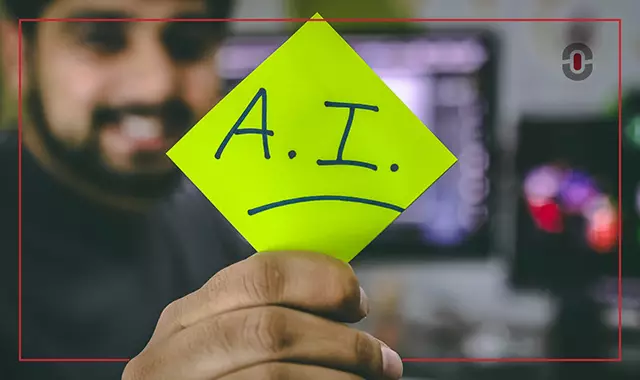Do you know that when Google released Translate circa 2006, the number of users was a few hundred and there were only two languages available? Today, the service translates roughly 100 billion words per day. Let’s discover more about machine translation in the following article.
Introduction
In an increasingly globalized world, language barriers remain one of the most significant obstacles to communication and business. As people and organizations continue to reach across borders, the need for efficient and accurate translation solutions has never been greater. In recent years, Artificial Intelligence (AI) has emerged as a game-changer in the field of translation, offering tools and technologies that are not only more powerful but also more accessible than ever before. AI-driven translation solutions, including machine translation (MT) and neural machine translation (NMT), are revolutionizing how we break down language barriers, and are undoubtedly shaping the future of how we communicate globally.
Core Technologies Behind AI Translation
AI translation refers to the use of artificial intelligence algorithms to translate text or spoken language from one language to another. This type of translation uses software systems that have been trained on vast amounts of multilingual data to learn and predict accurate translations.
There are three main technologies behind AI translation.
- Machine Learning (ML) – Machine learning is a subset of AI that enables computers to learn patterns from data without being explicitly programmed. In AI translation, ML models analyze millions of translated texts to identify patterns, word usage, and contextual meaning. Over time, these models become better at predicting accurate translations.
- Supervised Learning: AI models are trained using large datasets where the correct translations are provided. The system continuously refines its predictions based on these examples.
- Unsupervised Learning: AI models identify patterns and relationships between languages without labeled data. This approach is useful when there is limited translation data available.
- Neural Networks (NN) – Neural networks are a fundamental component of modern AI translation. They are computational models inspired by the human brain, capable of processing complex relationships between words, phrases, and sentences. A specific type of neural network called a Deep Neural Network (DNN) is used in Neural Machine Translation (NMT). NMT models improve translation by analyzing entire sentences instead of translating word-by-word. This approach results in more natural and contextually appropriate translations.
- Recurrent Neural Networks (RNNs): Earlier NMT models relied on RNNs to process sequences of words, but they struggled with long sentences.
- Transformer Models: Introduced in 2017, transformers (such as OpenAI’s GPT, Google’s BERT, and DeepL’s translation model) have revolutionized AI translation. They use an attention mechanism to focus on relevant words in a sentence, improving accuracy and fluency.
- Natural Language Processing (NLP) – NLP is the AI technology that allows computers to understand, interpret, and generate human language. NLP plays a crucial role in AI translation by enabling machines to analyze syntax and grammar, recognize context, handle ambiguity and optimize fluency.
Benefits, Challenges and Limitations of AI Translation
AI translation has many obvious benefits (speed and efficiency, because you can instantly translate huge amounts of data; cost-effectiveness, because you don’t need to pay for expensive human translators; consistency and standartization, because unlike human translation, AI don’t vary in style and interpretation; multilingual accessibility; real-time and live translation, etc.), but many limitations as well that challenge the developers.

- Accuracy and Contextual Understanding – AI translation systems often struggle with context-dependent phrases, idioms, and cultural nuances. Unlike human translators, who understand the deeper meaning of a sentence based on context, AI often translates words or phrases too literally. The simple reason is AI models rely on pattern recognition rather than true understanding. While NMT has improved fluency, it still struggles with sentences that require deep contextual interpretation.
- Handling Idioms, Slang, and Informal Language – This point is obviously connected with the previous one. Languages evolve constantly and slang, idiomatic expressions, and informal speech are difficult for AI to keep up with. Many of these phrases have meanings that change based on social, regional, or generational contexts. Interesting fact is that AI struggles to recognize sarcasm and humor in social media or casual conversations.
- Inconsistency in Translation – AI translation can be inconsistent, producing different results for the same phrase in different contexts or at different times. This makes it difficult to maintain uniformity in professional documents, branding, or official communication. For example, in a legal document AI might translate one and the same term differently in different sections, and that might lead to confusion. It happens because AI models generate translations based on probability, meaning they may change outputs randomly rather than follow strict consistency rules like human translators do.
- Struggles with Rare and Low-Resource Languages – AI translation performs well in widely spoken languages like English, Spanish, and Chinese, but struggles with rare, indigenous, or low-resource languages that have limited digital content available for training.
- Limited Understanding of Tone and Emotion – AI translation lacks emotional intelligence and cannot fully capture the tone, sarcasm, or emotional intent behind words. This can be problematic in creative writing, poetry, or emotionally charged conversations (but who would use AI to translate poetry, anyway?)
The Role of Human Translators in the AI Era
With the rise of AI translation technologies, many have questioned whether human translators will become obsolete. It is a long and controversial topic. One can say AI serves as a powerful tool that enhances efficiency, accuracy, and scalability in the translation industry. The important question is whether in the future AI would be sufficient by itself. So far, while it can handle large-scale and repetitive tasks, human translators remain essential for ensuring quality, cultural accuracy, and nuanced communication.
One of the most significant roles of human translators in the AI era is Post-Editing Machine Translation (PEMT). AI-generated translations often require human intervention to ensure correct grammar, tone, and cultural appropriateness. For example, a legal contract translated by AI might contain errors that change the meaning of a clause, and it would require human translators to verify and refine the text.
Handling complex and creative translations is something that human translators are still better at. AI translation is excellent for technical documents and structured texts but struggles with creative, literary, and emotionally nuanced content. Human translators bring creativity, cultural awareness, and emotional intelligence to translations.
On top of that, human translators contribute to training and improving AI models by providing high-quality datasets and correcting errors in AI-generated translations. Companies like Google, DeepL, and Microsoft employ linguists and human translators to refine AI models.
Applications of AI Translation Across Industries
AI translation is revolutionizing multiple industries by breaking language barriers, improving efficiency, and enabling global communication. AI translation is now widely used in sectors such as business, healthcare, legal services, entertainment, scientific research, tourism, education and e-learning, etc. It’s especially essential for e-commerce and retail because it automatically translates product descriptions, reviews, and customer inquiries on global e-commerce platforms. Also, as we witness every day, AI-powered tools translate social media posts and comments in real time. Thus, the benefit is not only for ordinary users, but also the businesses on social media use AI translation to engage with international audiences and sell their products and services.
If you’re looking to see how AI and human expertise can work together for accurate, efficient, and culturally relevant translations, consider exploring 1-Stop Asia’s tailored language solutions. Their approach combines cutting-edge AI translation technology with skilled human linguists that ensures high-quality translations going beyond word-for-word accuracy. With specialized solutions for businesses, legal services, healthcare, and media, 1-StopAsia bridges the gap between speed and precision, and makes it easier for companies to expand globally while maintaining linguistic and cultural authenticity.
Conclusion
AI translation is undoubtedly shaping the future of how we communicate across language barriers. From enhancing business operations and accessibility in education to improving healthcare and government communication, AI-powered translation tools are offering new opportunities for global collaboration and understanding. While there are challenges to overcome, particularly around accuracy, context, and cultural sensitivity, the rapid advancements in AI technology suggest that these hurdles will be addressed in the coming years.
As AI continues to evolve, we can expect translation tools to become even more intuitive, accurate, and culturally aware. The future of language solutions is not just about translating words — it’s about connecting people, fostering understanding, and breaking down barriers in an increasingly interconnected world.
